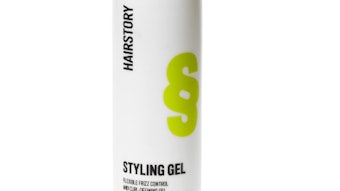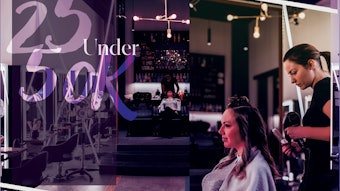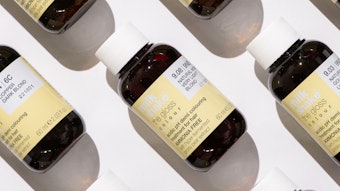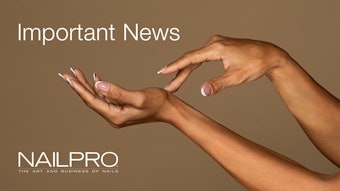 Everyone is talking about Jennifer Aniston's new haircut! The actress who is known for starting hair trends, think "The Rachel," has chopped off her locks and is now sporting a short bob. Aniston recently explained to Elle UK why she cut her hair. She revealed, "It wasn’t for a role. My hair went through a phase - I did this thing called a Brazilian and my hair did not react really well to it."
Everyone is talking about Jennifer Aniston's new haircut! The actress who is known for starting hair trends, think "The Rachel," has chopped off her locks and is now sporting a short bob. Aniston recently explained to Elle UK why she cut her hair. She revealed, "It wasn’t for a role. My hair went through a phase - I did this thing called a Brazilian and my hair did not react really well to it."
We spoke to experts to get some more insight into why Jennifer's hair might have reacted poorly to the treatment.
Check out tips from experts by clicking on their names below (or clicking to the next page).
Tania Cypriano, Inoar Professional
Steven Lightfoot, Peter Coppola Keratin Concept
[Image: Wikimedia Commons/gdcgraphics]
[pagebreak]Trissola stylist Helen Chaldranian, explains that the issue with these treatments that the hair keeps getting ironed over and over and that makes the hair dry. Also, when someone receives the keratin treatment repeatedly the hair cannot hold any more due to over processing with keratin.
Trissola stylist Helen Chaldranian offers these tips:
1. What I always tell our stylist is to pass the iron to the ends no more then 3-4 times. Some stylists pass the iron 10 times and that dries the hair, especially if the client already has over processed hair.
2. When the stylist is doing a smoothing treatment and the ends are singeing up, the flat iron temperature is too high. It should be lowered and not pass on the ends more then 3 times. Remember, the ends are the most porous area of the hair.
3. No need to cut it off. Maintain getting a trim every 6 to 8 weeks and give a break on chemical treatments and focus on putting moisture back in the hair by using the proper hair care product like Trissola’s Intense Hydrating Masks followed by the Leave In Conditioner.
4. When doing a keratin treatment always start ironing from the nape area and if you feel that the hair is frying, lower the temperature. It is always a good idea to get a break in-between the keratin treatments and add hydration to the hair by using deep conditioning mask like Trissola Intense Hydrating Mask.
Clients with fine hair cannot take 450 degree heat on their hair; I would suggest the hairstylist set the iron no more then 390 degree Fahrenheit for blonde fine hair. Keep in mind of different porosity throughout the hair and proper temperature should be used.
Iron Temperature
Fine/ Damaged Hair 390º F (200º C)
6 times base to mid
3 times porous ends
Medium Hair 410º F (210º C)
8 times base to mid
4 times porous ends
Coarse / Resistant Hair 450 F (230 C)
8 times base to mid
4 times porous ends
[pagebreak]Carolyn Zambrano Educator and Hair Stylist from Rejuvenol explains:
Damaged, fine or over processed hair can’t handle high temperatures; when our Keratin Treatments are performed on these types of hair we recommend setting the iron at 350°F.
For thick, virgin hair that’s in good condition 450°F it’s recommended to get the best results. We advise not ironing the ends more than three times to avoid split ends and burning.
We recommend stylists should be well trained. The stylist needs to be aware of the temperature of the iron. There are certain temperatures that the iron needs to be at when it’s applied to hair. There are many types of hair, some hair could handle the heat and others can’t. They also need to be able to give a good consultation to the client so that the client is well aware what type of treatment the hair will receive and the maintenance so that the keratin stays longer in their hair. [pagebreak]Master Educator for Inoar, Tania Cypriano shares her advice:
In order to have a Keratin Treatment done, the hair needs to be healthy. A professional hair stylist should do a strand test to verify that. As a hairstylist, I believe that the consultation before ANY work is always the key of a good service. It protects you and your client.
Before you start a work on your client, you should ask questions about her lifestyle: Does she color her hair very often? Does she swim and have chlorine on her hair? Is she taking any type of medicine?
When a client sits on my chair, the first thing I do is to look and analyze her hair. If I notice porosity and weakness from bleaching, I will NOT recommend the Brazilian Keratin or any type of chemical treatment. I would probably do a deep conditioning treatment and send her home. The STRAND test is very important to assure that the product you are applying in the hair is safe for the client.
Another point is that vitamins and medicines could change de PH and the structure of the hair.
The possible reasons for a bad reaction to a smoothing treatment include:
-The hairstylist did not do a strand test before applying the product.
- The hair was already weak from bleach colored or any other chemical process before the keratin treatment.
-The client used products not compatible with keratin treatments.
-The client is taking strong medicine that contributed to the ‘weakness’ of the hair.
To avoid a scenario like Jennifer Aniston's, Tania recommends to do a safe pre-consultation and a hair strand test before any chemical application.
[pagebreak] Jamie Muniz, PRAVANA Stylist shares her insight:
What could be the possible reasons someone's hair would "not react really well" to a smoothing treatment?
A great chemical service begins with analyzing the hair correctly. Stylists need to make sure that the integrity of the hair is fit to handle the type of smoothing treatment being applied including any heat that may be used during the service. Secondly, the application process needs to be conducted precisely per manufacturer’s instructions. Smoothing treatments can produce brilliant results, however if careful analysis is not conducted and steps are not carefully followed many of the varying types of chemical smoothing or straightening treatments can cause irreparable damage to the hair. PRAVANA’s Perfection SmoothOut is great and effective alternative to these Brazillian-type relaxers, as it takes the guesswork out of what kind of hair the SmoothOut can be applied to – since it is safe enough for every type of hair. With a proprietary non-amino acid complex, heat protective polymers, and enriched with natural conditioning shea butter, Perfection leaves the hair in better condition than before!
What would be the symptoms of a smoothing treatment not taking?
“Not taking” is not generally a problem because that would suggest that the product did not do anything at all. However, symptoms of a smoothing treatment gone wrong include loss of moisture, shine, rough or limp texture, broken hair, or hair that has been depleted to the point of dissolving. There are so many different types of smoothing treatments on the market that results can vary dramatically.
Would cutting hair off help the situation?
Often when a smoothing treatment is conducted it is performed from the roots to the ends of the hair. The ends of the hair can be several years old, so they are the most fragile and naturally depleted area of the hair strand, even when great care is taken. Cutting the most fragile and damaged portion of the hair strand is definitely helpful in reviving the look of the hair because the “younger” portion of the hair strand is stronger and more resistant to damage.
How do you recommend stylists avoid possible scenarios like this?
Always begin with an honest consultation with your client and a thorough and careful analysis of the condition of the hair. Do not be afraid to turn a client down for a service that they are requesting. Instead of conducting a smoothing treatment, your client may need a series of reparative treatments that can deliver the shine and smoothness that they are looking for. PRAVANA’s KeraGLAZE’s quick, 2-step service strengthens hair instantly with pure keratin protein, without taking longer than a typical blowout! Always follow the steps of the manufacturer precisely because saturation, timing, and temperature of any heat implements used can greatly affect the outcome of your service. [pagebreak] Steven Lightfoot, Peter Coppola Education and Technical Director shares his insight:
What could be the possible reasons someone's hair would "not react really well" to a smoothing treatment?
There is always a level of damage any “treatment” can’t fix. If your hair cannot take a 450 degree Iron you may want to reconsider doing a Traditional Keratin Treatment. However, newer non-toxic treatments such as the Coppola Keratin Smoothing Treatment use less heat and more technology to accomplish the results.
It is just a matter of having a very competent individual in this specific type of treatment to avoid issues. Sometimes it just comes down to proper diagnosing of the clients hair type.
With the amount of misleading verbiage and “miseducation,” associated with some of these products there are more cases of user error than anything.
Internally, if your eyes burn from the fumes or you have a headache or sore throat from the fumes that qualifies as not reacting well.
What would be the symptoms of a smoothing treatment not taking?
There is only one way to know if a smoothing process worked, assuming that your hair isn’t ruined from heat or chemical issues; The first shampoo is the real test. If you wash your hair and it comes out smooth and defrizzed you know it has worked. You may get varying results with traditional treatments depending on the levels of preservatives which vary from brand to brand.
If after your first shampoo your hair is more damaged than it was prior to the service you know that your hair may be in need of length change as was required in Jennifer Aniston's experience.
Would cutting hair off help the situation?
If your hair was ruined only at the end then yes a haircut would remedy the situation. If the entire head of hair was improperly done with too much heat, then even a haircut may not solve the problems. This is very rare but it should be said if you are an educated consumer.
How do you recommend stylists avoid possible scenarios like this?
Get as close to the source as possible for information and do your own research! It is our job as stylists to fact check the bottle and to make sure we know what products we are using and how they work. At Peter Coppola Keratin Concept we issue full disclosure with our ingredient list and teach about the difference in ingredients in our trainings and seminars. When you are going to do a service make sure that you get the proper education from the manufacture Make sure the iron you are using is a high quality tool/ The irons temp can vary from brand to brand. Here is a helpful hint. If you have an iron that has a stable temp try 420 and use more passes rather than higher heat. [pagebreak]
Deb Gavin, International Artistic Director, Color Therapy, for Keratin Complex explains:
I can't comment on another brand, but the reason it would not happen with Keratin Complex Smoothing Treatment is because it’s a superior treatment and the brand offers a range of products to treat different hair types and sensitivities.
The other part of the equation is through stellar education in the way we teach Keratin Complex Smoothers to our stylists.
Typically, it is not a product that creates stress to the integrity of the hair, it is poor application. I am assuming there was cuticular damage that could not be reversed, which required a cut.
Through all of our constant research, product development, tools, support products and education, a Keratin Complex smoothing client is a happy client and the integrity of the hair is improved, rather than compromised.










